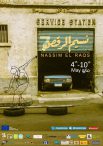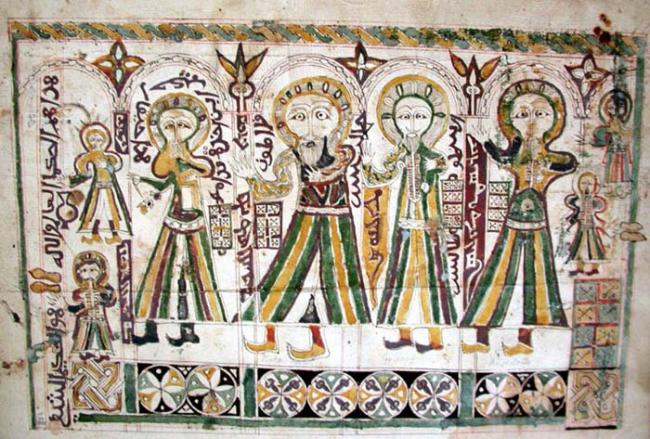 I find the proposition that people should learn Modern Greek because this will improve their English vaguely amusing. Granted there do exist an extremely large number of Greek loanwords and Greek-derived neologisms in the English language but more often than not, English speaking Greeks tend to learn the Greek word AFTER they have discovered its English version. Mourad Didori, Lecturer in Arabic Language Studies applies a similar rationale in his course of lectures You Already Speak Arabic where the number of Arabic words utilised by colloquial English, including apricot, on-loaned from Byzantine Greek, is astounding. While Greek is not the mother of languages as some cultural supremacists would have us believe, it is a little known fact that the Greek language profoundly influenced the languages of the Middle East, especially Arabic and through it, Persian. My first experience of this was when a Persian friend referred to a grape as estafil. Said Persian friend caused my jaw to drop and my mouth to gape open when proceeding to refer to a right angle as a gonia. The borrowings from Greek into the various Iranian languages began in pre-Islamic times, with words such as simino ‘made of silver, silverware,’ attested in Bactrian, didm or diadem attested in Middle Persian, ispir or sphere in Parthian, ‘ysimarye’ for smaragdi or emerald in Pahlavi and yakund, for hyacinth, also in Pahlavi. Most interesting from my point of view is the word palau,originally meaning bowl, from which the word pilaf is derived. This word appears to be a Khotanese borrowing from the Greek word phiale, also meaning bowl.
I find the proposition that people should learn Modern Greek because this will improve their English vaguely amusing. Granted there do exist an extremely large number of Greek loanwords and Greek-derived neologisms in the English language but more often than not, English speaking Greeks tend to learn the Greek word AFTER they have discovered its English version. Mourad Didori, Lecturer in Arabic Language Studies applies a similar rationale in his course of lectures You Already Speak Arabic where the number of Arabic words utilised by colloquial English, including apricot, on-loaned from Byzantine Greek, is astounding. While Greek is not the mother of languages as some cultural supremacists would have us believe, it is a little known fact that the Greek language profoundly influenced the languages of the Middle East, especially Arabic and through it, Persian. My first experience of this was when a Persian friend referred to a grape as estafil. Said Persian friend caused my jaw to drop and my mouth to gape open when proceeding to refer to a right angle as a gonia. The borrowings from Greek into the various Iranian languages began in pre-Islamic times, with words such as simino ‘made of silver, silverware,’ attested in Bactrian, didm or diadem attested in Middle Persian, ispir or sphere in Parthian, ‘ysimarye’ for smaragdi or emerald in Pahlavi and yakund, for hyacinth, also in Pahlavi. Most interesting from my point of view is the word palau,originally meaning bowl, from which the word pilaf is derived. This word appears to be a Khotanese borrowing from the Greek word phiale, also meaning bowl.
Borrowings after the advent of Islam in Persia vary according to genres of texts and to disciplines of learning. Thus in contrast to Islamic religious scholarship (exempting the Koran’s Greek loanwords, which naturally passed into Persian) the syllabus of Aristotelian philosophy, medicine and its ancillary fields, and the occult disciplines-would seem to be primary loci of Greek terminology. Other channels by which Greek words entered Persian were commerce and administration. Eventually, most Greek elements to remain in Persian usage were proper names, especially of ancient authorities, and names of merchandise and of units of measure. Basically any Greek word encountered in Arabic could be incorporated into Persian, whether simply as Arabic or correctly identified as to its Greek origin or intermediate Greek stage.
In addition to division by semantic fields, Greek lexical items in Persian can also be distinguished by trajectory and period of borrowing, considering the marked historical caesurae that delimited periods of potential contact and the fact that, for most of their history, the two linguistic areas of Iranian and Greek were not contiguous. The Muslim conquest and with it the demise of the Sasanian dynasty, and the linguistic shift in Iranian, and the ensuing period of literary latency of what subsequently emerged as New Persian represented a watershed in the introduction of Greek into Iranian. Here a few closely interrelated questions arise, in regard to the period of original borrowing and as to the subsequent destiny of the borrowed lexical items. A fundamental difference exists between the Greek words that entered Persian before the Muslim conquest and the Greek loanwords dating from the post-conquest period. The former passed either directly or via Aramaic from Greek into Pahlavi, the pre-Islamic form of the Persian language while the latter inevitably had Arabic as their proximate origin before entering Persian. This holds true for most of the Greek terms of medicine and pharmacy used in Persian (such as tafisa from the Greek thapsia, and qarabadin, from the Greek graphidion meaning “booklet”).
There are, however, a number of notable exceptions that were passed from Greek into Old and then New Persian directly and are not restricted to use in medical contexts, such as yara (Greek. hiera “holy”), teryak (Greek. theriake “treacle”), ster (Greek. statir “stater,” and deram, derham “dram, dirham,” (Greek. drakhme). Conversely and in greater numbers, Greek medical and medicinal terms, first borrowed during early Byzantine times and then, falling into disuse in Persia were taken over into Arabic and were later re-introduced from Arabic into Persia, such as qawlanj from the Greek kolik meaning colic. From astronomy, examples of comparable late Middle Iranian Greek loanwords which first passed into Arabic before making their way back into Persian are the names Batlamiyus (from the Greek Ptolemaios,) and Majesti (from the Greek Megiste, referring to Ptolemy’s great mathematical work, the “Almagest.”
The reception of large numbers of Greek loan words into Persian is only astounding today, owing to the fact that Iran culturally and politically seems extremely distant and foreign to a modern European-oriented Greece. Yet for most of Greek history, Iran was the other, the utter opposite that fascinated and served to define the Greeks and cause them to construct their own identity. Greek and later Byzantine imperialism, it could be plausibly held, developed from, or aped Persian precedents and it is no coincidence that Greek imperialist expansion primarily took place in the East, over what was once Persian held territory. Cultural exchanges intensified with the transplantation of Greek colonists into Bactria and Byzantine imperial ceremonial was heavily influenced by that of the Persian Sassanian kings, who incidentally referred to their Greek counterparts as “brothers,” considering them to be the only rulers that were their equals. Diplomatic presents usually took the form of the exchanging of texts, engineers and philosophers, while it must be noted that upon the closure of the School of Athens by the Emperor Justinian, Greek philosophers were invited into Persia by its shah, and re-settled in Ctesiphon. Heretical theologians and Greek political refugees were treated likewise so it is no wonder then that the following amazing range of Greek words entered the Persian tongue:
Toponyms: Atiniya “Athens,” Eskandariya “Alexandria,” Ankuriya “Ankara,” Qaysariya “Caesarea,” Rumiya “Rome,” Atrabolos “Tripoli”; Senub “Sinope,” Sivas “Sevasteia.”
Astronomy: Barsavos “Perseus,” Dalfin “Delphinus,” Qanturis “Centaurus,” Qitus “Cetus,” and Qifavus “Cepheus.”
Biblionyms: Abidimiya, from Epidimia “the Epidemics of Hippocrates,” Urganun from Organon “the Organon of Aristotle,” Isaguji from Eisagogi “the Isagoge of Porphyry,” Bari Armanias from Peri Hermineias “Aristotle’s De interpretatione.”
Units of currency and measure: pul from obolos; qesta from xestes, “pint,” qerat from keration “carat.”
General terms: eqlim from klima, “clime,” sabun from sapion, “rotten, putrid,” manjaniq from manganikon, “pulley,” buqalamun from hypokalamon, “moiré cloth,” qamus from okeanos “ocean,” abanus from ebenos “ebony,” tumar from tomarion “document, tract,” qalam from kalamos “reed,” qertas from khartis “sheet of papyrus,” qanun from kanon “straight-edge, rule,”
Medical terms: In addition to Galen and other major authors of works on medicine in Arabic, Dioscorides’s classic on materia medica, provided a wealth of Greek medical terms. Not only was the text studied in Arabic translation, but it was also rendered into Persian. A few samples to permit a glimpse into a rich, existing repertoire: fantasiya for phantasia, “display; imagination,” ilaaus for eileos, “intestinal disease,” faranites for phrenitis, “frenzy,” malikulia for melancholia; anisun for anithon “dill, anise,” qulqas for kolokasi- “Egyptian lotus,” qalqand for khalkanthon, “copper sulphate solution.”
Philosophical terms: hayula for hyle, “wood, timber; matter,” faylasuf for philosophos “philosopher.”
Alchemical terms: eksir for xirion “desiccative powder for wounds,” telasm for telesma “payment, outlay,” and kimia for khimeia “melting; alchemy.”
Religious terms: Eblis for diabolos “slanderer; the Devil,” enjil for euangelion “gospel.”
Of course Persian would get its own back after the fall of Byzantium whereupon through Turkish, a multitude of Persian words would flood the Greek vocabulary, the vast majority of which are still in daily use in the Modern Greek tongue today. Nonetheless, from the first attested appearance of Persian into Greek, being a few garbled words in Aeschylus’ play “the Persians,” until the modern era, there has been a continuous, fascinating and ultimately enriching exchange of culture and vocabulary, absent of which, both our people’s cultures would be much diminished. Next week, a look at Ancient Greek loanwords from Semitic languages. Until then, its an αρραβώνα, which, of course, is an ancient Assyrian word for promise of pledge.
Tag: Culture
-
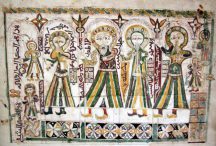
Greco-Persian
-
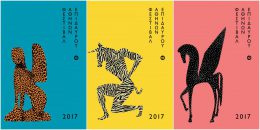
Athens and Epidaurus Festival 2017: Youthful, Alternative, Political
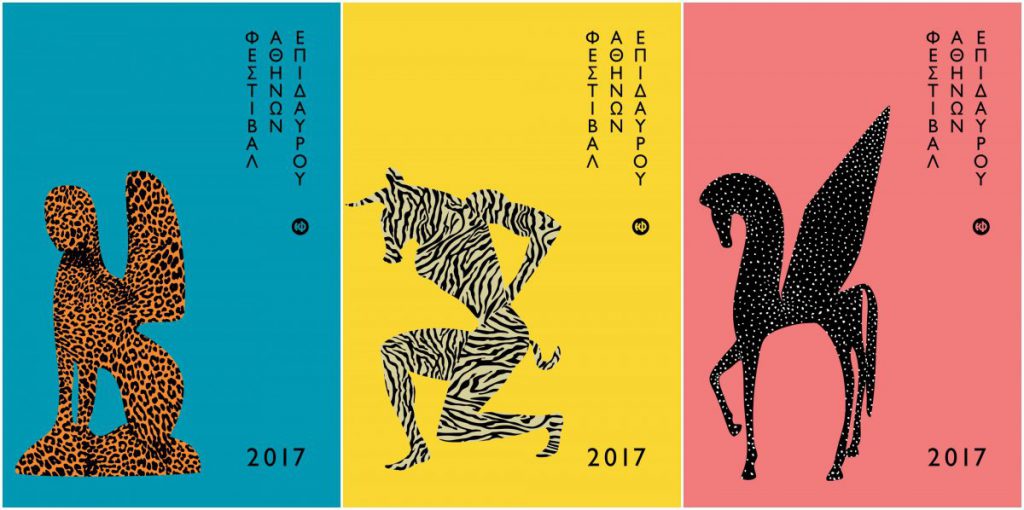 Since its inception in 1955 the “Athens and Epidaurus Festival” was staged at the Odeon of Herodes Atticus in an attempt to bridge modern recollections of antiquity with contemporary artistic output. In recent years the Festival forged a modern identity opening up to cutting-edge international productions, and promoting young Greek artists who have something to say to contemporary audiences.
Since its inception in 1955 the “Athens and Epidaurus Festival” was staged at the Odeon of Herodes Atticus in an attempt to bridge modern recollections of antiquity with contemporary artistic output. In recent years the Festival forged a modern identity opening up to cutting-edge international productions, and promoting young Greek artists who have something to say to contemporary audiences.Throughout this summer, the Festival will present a rich programme of open-air theatre, ancient drama, opera, classical music, concerts and dance performances at landmark locations in Athens and Epidaurus. Its new identity – a festival that is inclusive, that reflects its host city, and that brings the livelier aspects of society back into play is being enhanced this year launching a series of new sections, collaborations, and openings, which according to the Festival’s artistic director, Vangelis Theodoropoulos will “hopefully revitalize the Greek performing scene and over time bear fruit and become established parts of the Festival,” adding that its intention is to be “able to give a first taste of the direction in which we are interested, an initial positioning -youthful, alternative and at the same time political.”
This year will see the launch of the Epidaurus Lyceum, an international summer school of ancient Greek drama intended for drama school students and young actors from all over the world. The 2017 Epidaurus performances and the courses on offer at the Epidaurus Lyceum, as well as other relevant activities will fall under a common theme. With the migrant and refugee crisis continuously testing and trying the identity of Western societies, this year’s umbrella title for all Epidaurus and Lyceum productions is “The Arrival of the Stranger” as reflected in ancient texts and in the interplay of ancient drama and the historical present.
This year will also see the launch of another important new section of the Festival: “Opening to the City”. Encompassing performances and events at non-theatrical spaces, site-specific, poetic and musical performances, and activist interventions in dodgy or run-down areas of the city, this section seeks to counteract the increasingly withdrawn and introspective stance of society, responding to the fear of diversity, and taking a stand against parochial, insular, and racist attitudes at large.
The Ancient Theatre of Epidaurus will feature works by both accomplished and emerging Greek directors. The Little Theatre of Ancient Epidaurus will host productions with a more alternative take on ancient drama, including a Festival d’Avignon production, directed by Olivier Py. The stages of Peiraios 260 will be dedicated, as usual, to contemporary theatre and dance productions. The Odeon of Herodes Atticus will host principally musical productions, including operas, orchestras, and concerts of classical, modern Byzantine, folk, and contemporary Greek music.
In an outgoing spirit that looks to connect the Athens and Epidaurus Festival with other institutional actors, the Festival also renewed its cooperation with the Athens International Film Festival “Opening Nights”, for the purposes of the Athens Open Air Film Festival. This year, with the support of the British Council, the Athens Open Air Film Festival has prepared a tribute to mystery, horror and dark surprises to turn your summer night on their heads! Gothic horror and romance stories based on the darkest fears and desires will be the cinematic myths featured in «British Gothic».
As for the international program, it will include a multifaceted tribute to the world-famous Volksbühne, featuring three major productions, among which a performance by its outgoing artistic director, Frank Castorf, who ran the historic Berlin theatre for 25 years.
The Epidaurus programme will come to an end with a closing celebration at the Ancient Theatre of Epidaurus on Saturday 19 August, featuring music and dances from the Peloponnese region.
-
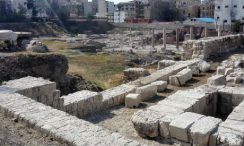
4th century imperial bath complex inaugurated in Egypt’s Alexandria
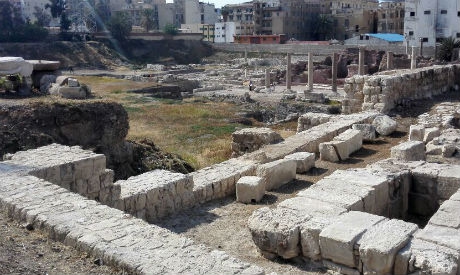 Egyptian Minister of Antiquities Khaled El-Enany and members of parliment inaugurated Alexandria’s cistern and imperial bathing complex area in the Kom El-Dikka archaeological site.
Egyptian Minister of Antiquities Khaled El-Enany and members of parliment inaugurated Alexandria’s cistern and imperial bathing complex area in the Kom El-Dikka archaeological site.The area had been undergoing excavation and restoration since 1960 by an Egyptian-Polish mission from Warsaw University.
Mahmoud Afifi, head of the ministry’s Ancient Egyptian Antiquities Department, said that the newly inaugurated area will be included within the Kom Al-Dikka tourist path, which includes the Roman amphitheater, the bird villa and residential houses from the Hellenistic period until the Islamic era.
El-Enany describes the bathing complex as “one of the finest edifices of its time,” and that the bathing halls had welcomed hundreds of bathers at a time.
The complex also includes palestrae for physical exercises, colonnade passages and amenities such as public latrines.
Water was supplied to the complex using huge cisterns and heated by a complex system of furnaces and pipes.
The minister and the parlimentary delegates also paid a visit to the planned Mosaic museum in downtown Alexandria to inspect the ongoing work and address any obstacles to its completion.
During the tour, Mohamed Abdelmaguid, director-general of the Underwater Archaeological Department, introduced a three-phase plan to develop the Qayet Bey Citadel and its surroundings.
Abdelmaguid also reviewed a plan for the construction of the first underwater museum beneath the city’s eastern harbour, which once was the ancient Alexandria royal area.
Abdelmaguid suggests the building of an underwater park to promote diving as well as the establishment of a training centre for underwater archaeology.
-
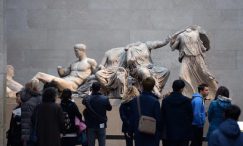
Parthenon Marbles resurgence
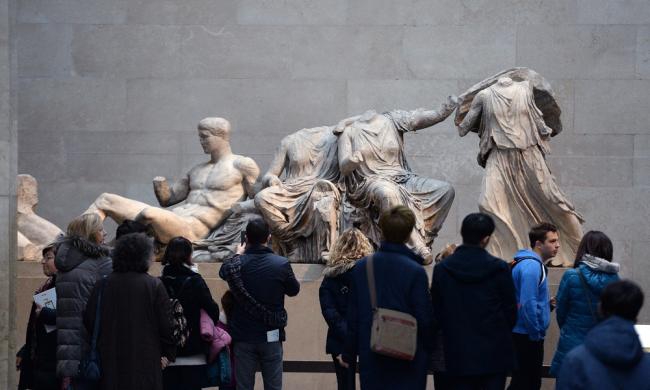 In recent developments for the return of the Parthenon Marbles, the Athens government has made a desirable offer; to loan, on a recurring and long-term basis, rare archaeological treasures from Greek museums in exchange for the return of the Marbles from the British Museum.
In recent developments for the return of the Parthenon Marbles, the Athens government has made a desirable offer; to loan, on a recurring and long-term basis, rare archaeological treasures from Greek museums in exchange for the return of the Marbles from the British Museum.The request has been made as a symbolic act in the fight against anti-democratic forces that appear to be on the rise and seeking “the dissolution of Europe”.
“The reunification of the Parthenon Marbles will be a symbolic act that will highlight the fight against the forces that undermine the values and foundations of the European case against those seeking the dissolution of Europe,” said Lydia Koniordou, the Greek Minister of Culture and Sport.
“The Parthenon monument represents a symbol of Western civilisation. It is the emblem of democracy, dialogue and freedom of thought.”Greece has a number of art works dating back to antiquity, including the ‘golden mask of Agamemnon’ and the statue of Zeus/Poseidon, which if loaned to Britain would likely draw great interest.
In an official statement the International Association for the Reunification of the Parthenon Sculptures (IARPS) said the Greek government had clearly made the offer in the “true spirit of compromise”.
“Greece and its supporters will not rest until all the known surviving sculptural elements from the Parthenon are reunited in the Acropolis Museum in full view of the monument which they once adorned,” the IARPS said.
Andrew George, chairman of the British Association for the Reunification of the Parthenon Sculptures, said agreeing to return the sculptures on these terms would only help the UK to rebuild its reputation in the region following the controversial Brexit vote.
“Britain has nothing to lose but a deeply damaged reputation – having clung on for over 200 years to such important artefacts which were stolen from the Greeks when they could do nothing to stop it – and has much to gain at the very time Britain’s reputation needs enhancing amongst those countries it wants to do a deal with,” Mr George said.
The Marbles were taken from Greece more than 200 years ago by Lord Elgin, when the country was still part of the Ottoman Empire, where they once adorned the Parthenon temple built by the world’s first democracy some 2,500 years ago.
-
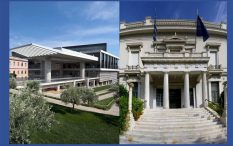
Two Museums in Athens among 41 Most Spectacular to See Around the World
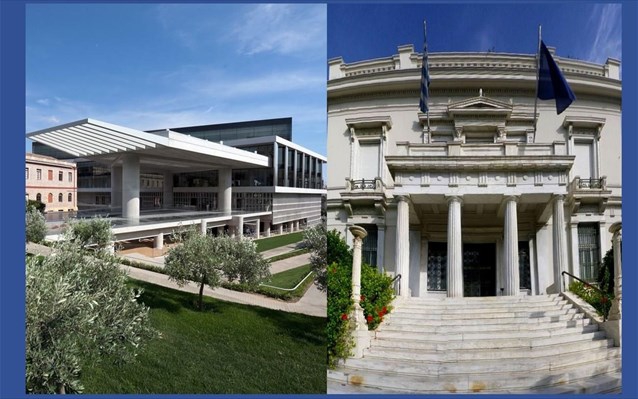 The Acropolis Museum and the Benaki Museum in Athens are among the world’s 41 most incredible museums to visit before you die, according to the online edition of UK newspaper The Telegraph. The list was compiled by The Telegraph’s experts.
The Acropolis Museum and the Benaki Museum in Athens are among the world’s 41 most incredible museums to visit before you die, according to the online edition of UK newspaper The Telegraph. The list was compiled by The Telegraph’s experts.Acropolis Museum
As noted in the article, the Acropolis Museum — inaugurated in June 2009 and designed by Swiss architect Bernard Tschumi — displays “proud statues of the ancients and life-like stone carvings of animals”. It is also mentioned that the museum’s top floor is devoted to the marble frieze that once ran around the top of the Parthenon. “The missing pieces were removed by Lord Elgin in 1801 and are now in the British Museum in London. The Greeks have wanted them back for decades, and hope that this blatant presentation will finally convince the British to return them.”Benaki Museum
Referring to the Benaki Museum, the article informs that it is housed in a neo-classical building “with a lovely roof-terrace cafe” and traces Greek art right up the 20th century. “…Top pieces include the Thessaly Treasure (a hoard of gold filigree jewellery set with precious stones, dating from the second century BC), two early paintings by El Greco, and the reconstruction of two 18th-century, wood-panelled, Ottoman-inspired living rooms.”Other incredible museums to visit before you die, according to the article, include New York’s Museum of Modern Art and Metropolitan Museum of Art, Paris’s Musée du Louvre, Rome’s Vatican Museums, London’s Design Museum, Amsterdam’s Van Gogh Museum, Barcelona’s Museu Picasso, St Petersburg’s The Hermitage and many more.
-
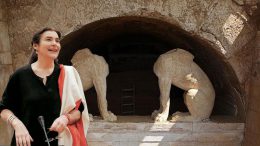
Greek Culture Minister allocates €2.5 million for Amphipolis Tomb project works
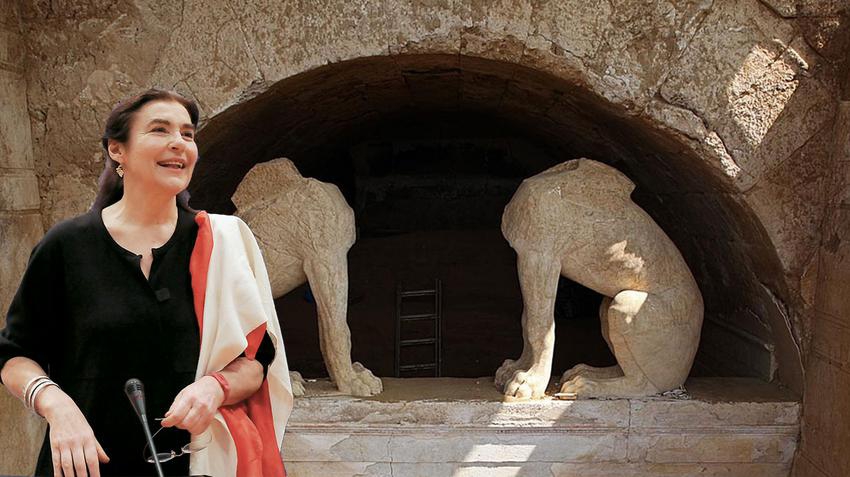 Recently appointed Greek Culture Minister Lydia Koniordou announced that 2.5 million euros have been allotted for restoration works executed at Kasta Hill, the excavation site of the Amphipolis tomb.
Recently appointed Greek Culture Minister Lydia Koniordou announced that 2.5 million euros have been allotted for restoration works executed at Kasta Hill, the excavation site of the Amphipolis tomb.During a press conference this week, she clarified that the funds will be made available immediately for the restoration of the site in northeastern Greece, where a huge grave from Alexander the Great’s era was unearthed.
The so-called Kasta Tomb, also known as the Amphipolis Tomb is an ancient Macedonian tomb that was discovered inside the Kasta mound (or Tumulus) near Amphipolis, Central Macedonia, in northern Greece in 2012 and first entered in August 2014. The first excavations at the mound in 1964 led to exposure of the perimeter wall, and further excavations in the 1970s uncovered many other ancient remains.
The recently discovered tomb is dated to the last quarter of the 4th century B.C. The tumulus is the largest ever discovered in Greece and by comparison dwarfs that of Philip II of Macedon, father of Alexander the Great, in Vergina. The excavation team, based on findings unearthed at the site, argued that the tomb was a memorial dedicated to the close friend of Alexander the Great, Hephaestion.
It is not yet known who is buried in the tomb, but the initial public speculation that it could be the tomb of Alexander the Great, because of its size and estimated cost of construction, was dismissed by the experts community when commenting on the published findings, as the available historical records mention Alexandria in Egypt as the last known location of Alexander’s body; it has been supported instead, that a likely occupant could be either a wealthy Macedonian noble or a late member of the royal family.
The skeletal remains of five people were unearthed within a corresponding tomb, in the lower levels of the third chamber in November 2014. The dead of the burial are: A woman at the age of 60, two men aged 35–45, a newborn infant and a fifth person represented by minimum fragments. Further examination is underway with regard to the dating of the skeletal remains, as well as DNA cross examination between the dead of the burial as well as other skeletons from the neighboring tombs in the area.
Monogram of Hephaestion
At a press conference in the Aristotle University of Thessaloniki, Greek archaelogist Katerina Peristeri revealed the existence of three inscriptions apparently linking the tomb to Hephaestion, nobleman, General and close friend of Alexander the Great. The ancient Greek word “ΠΑΡΕΛΑΒΟΝ” (it means “received”) is written in the inscriptions and next to it the monogram of Hephaestion.
According to the Culture Minister, the resources will also be allocated for works to unify the archaeological sites of Amphipolis and create specially designed trails for visitors.
Ms. Koniordou also revealed that other current projects of the Greek Culture Ministry include the upgrade of five more ancient Greek theaters, Ancient Gitana Thesprotia, Ancient Ambracia, Nikopolis, Kassopi and Dodona that are all connected through the Epirus cultural route.
Furthermore, the Culture Ministry plans to hire 1,314 museum and archaeological site guards for the season and they are expected to be in their positions as of early April.
Finally, she noted that the e-ticket access will initially run as a pilot program at the Acropolis, Mycenae, Knossos and Messina sites.
-
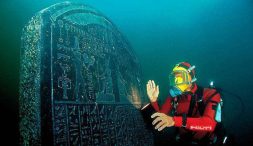
Egypt’s underwater antiquities travel the world
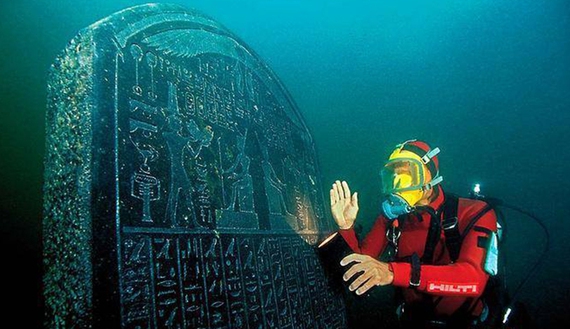 Off the coast of Alexandria, the underwater antiquities date back thousands of years and include palaces, columns, ships, castles and statues that sunk after Alexandria witnessed a series of earthquakes throughout history. The exhibition “Osiris: Egypt’s sunken mysteries” displays many artifacts discovered through underwater archaeological excavations, and is currently on display at the Rietberg Museum in the Swiss city of Zurich. Egyptian Minister of Antiquities Khaled al-Anani opened the exhibition on Feb. 10.
Off the coast of Alexandria, the underwater antiquities date back thousands of years and include palaces, columns, ships, castles and statues that sunk after Alexandria witnessed a series of earthquakes throughout history. The exhibition “Osiris: Egypt’s sunken mysteries” displays many artifacts discovered through underwater archaeological excavations, and is currently on display at the Rietberg Museum in the Swiss city of Zurich. Egyptian Minister of Antiquities Khaled al-Anani opened the exhibition on Feb. 10.The exhibition in Zurich displays 293 artifacts that tell the myths of Osiris, the Egyptian god of the underworld, and Egypt’s sunken antiquities that were found in the towns of Heracleion and Abu Qir and the eastern port of Alexandria. The artifacts have been selected from several Egyptian museums.
In September 2015, the exhibition opened in France for a period of five months. Here, more than 250 artifacts were on display. The second place to host the exhibition was the British Museum in London, where the artifacts were on display in May-November 2016. The London exhibition displayed 293 artifacts, roughly 270 of which had been pulled from the depths of the sea off the coast of Alexandria.
Before the inauguration of the exhibition in Switzerland, Anani announced at a press conference Feb. 9 that the exhibition had been a success in the European capitals of Paris and London.
He said, “The ministry will hold more archaeological exhibitions in various cities and capitals around the world given the high turnout of ancient Egyptian civilization lovers. The exhibition aims to introduce these fans to the archaeological treasures of the Egyptian civilization. This is the best promotional way that can help Egypt restore its touristic activity. The ministry has taken all the necessary legal and insurance procedures to protect all the exhibition’s artifacts until they return to their homeland.”
Mohammed Abdul Majid, the director general of the Underwater Antiquities Department at the Ministry of Antiquities, told Al-Monitor, “The exhibition positively affects the sunken monuments and draws the world’s attention to the importance and originality of these antiquities.”
Abdul Majid said, “There are many missions that worked on the exploration of sunken antiquities, most notably the French mission led by Jacques Dumas in 1983 and 1984, which came to search for Napoleon’s fleet in the waters of the Abu Qir Bay. The mission found the L’Orient flagship as well as the L’Artemise and La Serieuse frigates. Another French mission for underwater archaeological research returned in 1986 and worked on finding a ship named Le Patriote off the coast of the Alexandria neighborhood known as “al-Max.” For its part, the mission of the European Institute for Underwater Archaeology discovered the royal quarters of the ancient city of Alexandria in the city’s eastern port in 1996. Napoleon’s fleet was rediscovered in 1998, while [the ruins of] east Canopus were discovered in 1999 and the city of Heracleion in 2000.”
He added, “The lighthouse of Alexandria is one of the most important discoveries of sunken antiquities. [Parts of it] were discovered in 1995 by the French mission of the Center for Alexandrian Studies, and the recovery operations are still ongoing in the waters of Alexandria to preserve the sunken antiquities.”
Asked about the most important obstacles hindering the recovery of the sunken antiquities, Abdul Majid said, “Natural factors cause the main obstacles that hinder the recovery operations due to poor vision in the depths of the waters of Alexandria; the recovery operations should be carried out when the sea is calm.”
He noted, “There is a project to create an underwater museum for sunken antiquities, but it requires [approval] from the Ministry of Antiquities. The state should be interested in such a project, so that all of the Egyptians can see their sunken antiquities.”
An international competition was organized under the auspices of UNESCO to create an underwater museum for sunken antiquities, and the architectural design submitted by famous French architect Jacques Rougerie was selected. While the project was supposed to be completed in September 2009, it has yet to be achieved. In this regard, Anani said, “The establishment of an underwater museum for sunken antiquities would cost up to $350 million, a difficult task amid the financial crisis plaguing the ministry.”
Asked about the sunken antiquities’ exploration stages, Abdul Majid said, “The first phase is the archaeological survey, followed by the antiquities’ evaluation and examination. Then there is the phase of excavation, documentation, drawing, photography and spotting of antiquities on the location map and the map of Egypt. The decision whether to pull out the antiquities or not is based on how much the artifacts can be restored, the effects of leaving them in the water and whether pulling them out with a net could impact their structure. The decision also depends on the artifacts’ proximity to diving sites and their potential relocation due to the waves.”
Emad Khalil, a professor of Maritime Archaeology at the University of Alexandria, told Al-Monitor, “Holding an exhibition for sunken antiquities in Western countries such as Switzerland contributes to the return of tourism to Egypt and to introducing valuable Egyptian antiquities to the West.”
However, Khalil criticized the Ministry of Antiquities for holding the exhibition in several European capitals, but not in Egypt. He said this is odd as “before the Westerners, the Egyptians should be made aware of the value and greatness of their own history.”
Khalil added, “Moving forward, the sunken antiquities issue must be dealt with differently, and only historic ships that adversely affect the salty sea water must be pulled out. The other antiquities must be left under water for display.”
-
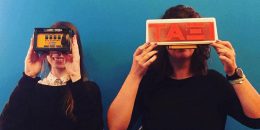
“GR80s”: get to know the Greece of the’80s through an exhibition!
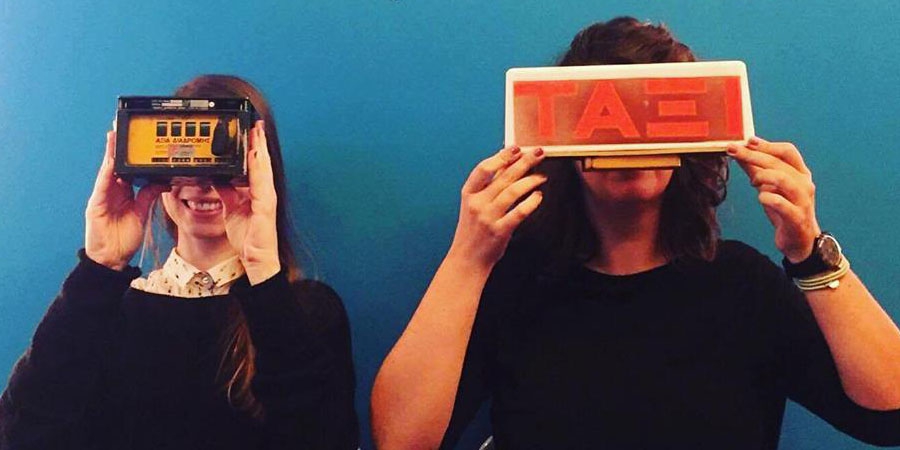 The first major participatory exhibition in Greece is a fact, and it is about the 1980s. Besides, it is bilingual and, therefore, particularly friendly to foreign visitors of the city too. Photos, clothes, all kinds of souvenirs and memorabilia, toys, pieces of furniture, audiovisual records and anything you can imagine will be among the exhibits on the exhibition called “GR80s. The Greece of the Eighties at the Technopolis”, which is to open on 25 January. Until March, the exhibition that is hosted in the old industrial gas facilities in Athens will revive the history, the culture and the atmosphere of the ’80s, in a partnership between the “Technopolis of the City of Athens” and the “Onassis Cultural Centre”. The public and private life during the decade will be recomposed through 4,000 interactive exhibits, four subject areas, 13 kiosks, rare photos, extensive audio-visual material and more than 30 parallel events. The result is expected to be very realistic since a large part of the exhibits came from volunteers who lent authentic objects of the decade for the exhibition.
The first major participatory exhibition in Greece is a fact, and it is about the 1980s. Besides, it is bilingual and, therefore, particularly friendly to foreign visitors of the city too. Photos, clothes, all kinds of souvenirs and memorabilia, toys, pieces of furniture, audiovisual records and anything you can imagine will be among the exhibits on the exhibition called “GR80s. The Greece of the Eighties at the Technopolis”, which is to open on 25 January. Until March, the exhibition that is hosted in the old industrial gas facilities in Athens will revive the history, the culture and the atmosphere of the ’80s, in a partnership between the “Technopolis of the City of Athens” and the “Onassis Cultural Centre”. The public and private life during the decade will be recomposed through 4,000 interactive exhibits, four subject areas, 13 kiosks, rare photos, extensive audio-visual material and more than 30 parallel events. The result is expected to be very realistic since a large part of the exhibits came from volunteers who lent authentic objects of the decade for the exhibition. -
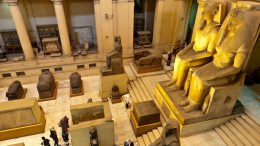
Egyptian museums achieve revenues of EGP 45m in 2016
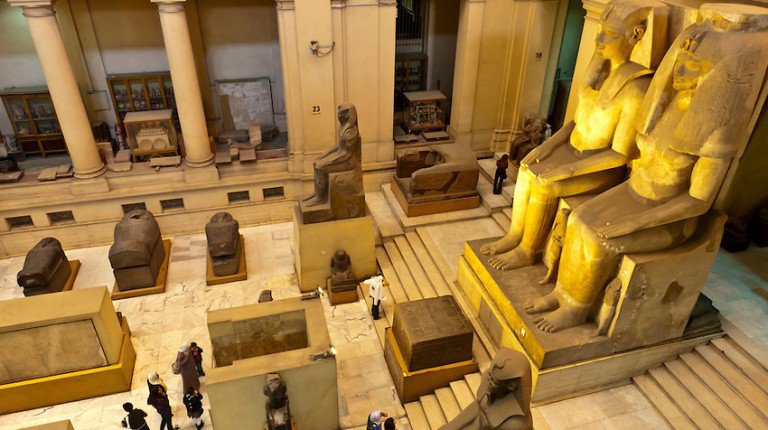 The Ministry of Antiquities’ affiliated museums have achieved total revenues of $45m with 974,400 visitors in 2016.
The Ministry of Antiquities’ affiliated museums have achieved total revenues of $45m with 974,400 visitors in 2016.According to a statement by the ministry’s museums division, the museums achieved the highest revenues in December, recording EGP 6.8m with 117,000 visitors, while the lowest revenue reached was $1.7m in June with 21,800 visitors.
Minister of Antiquities Khaled El-Anany told Daily News Egypt that the number of visits of museums and archaeological sites has increased during the recent months starting from October which coincide with the winter season, when the tourist flow increases in Egypt.
The museums’ total revenue in January reached EGP 2.8m with 72,400 visitors, compared to EGP 4m in February with 125,000 visitors.
The museums’ total revenue in March recorded EGP 3.6m with about 111,700 visitors, compared to EGP 3.5m with 68,000 visitors.
The revenues declined gradually, to record EGP 2.9m in May with 51,600 visitors, until they dropped to EGP 1.7m in June with 21,800 visitors.
The museums’ revenues in July were EGP 2.8m with about 84,000 visitors, and EGP 3m in August with 80,000 visitors.
The museums’ total revenue in September recorded EGP 3m with about 76,000 visitors, compared to EGP 4.2m in October with 70,900 visitors.
The revenues jumped in November recording EGP 5.7m with 94,700 visitors, and continued its growth to EGP 6.8m in December with a total of 117,000 visitors.
The number of the museums affiliated to the Ministry of Antiquities is 31 across the country, including 21 open-air museums and eight under-development museums, as well as two closed museums.
The closed museums are El-Arish and Beni Suef museums, while the ministry is still developing the Greek Roman museum, the Port Said museum, the Ahmed Orabi museum, the Tanta museum, the museum of Tanis, Rommel Cave museum, Mohamed Ali museum in Shubra, and the Royal Vehicles museum in Bulaq.
The ministry has opened three museums in the second half of 2016 after finishing their development, including Farouk Corner museum, which was opened in August; Mallawi museum, opened in September; and Kom Oshim museum, opened in November.
